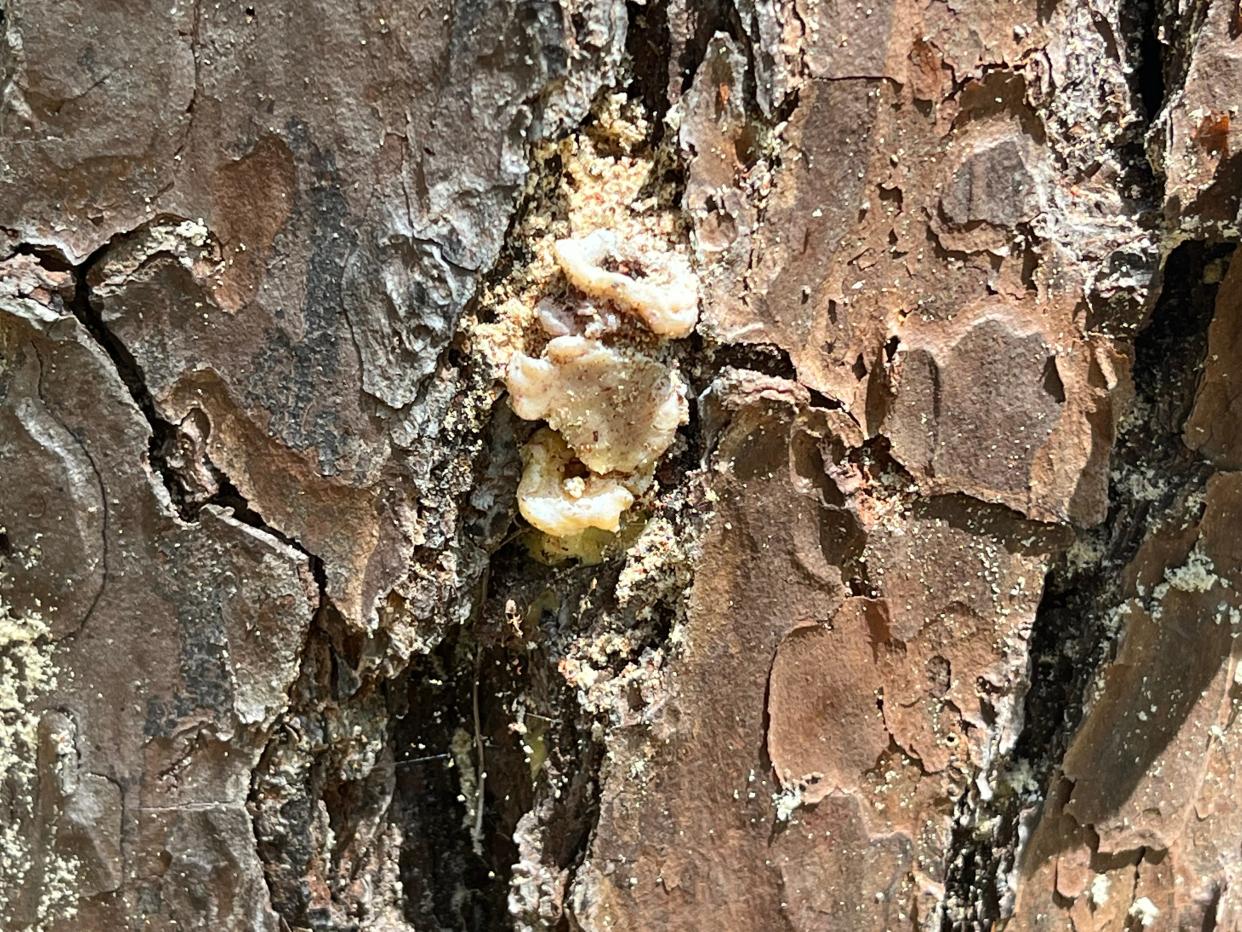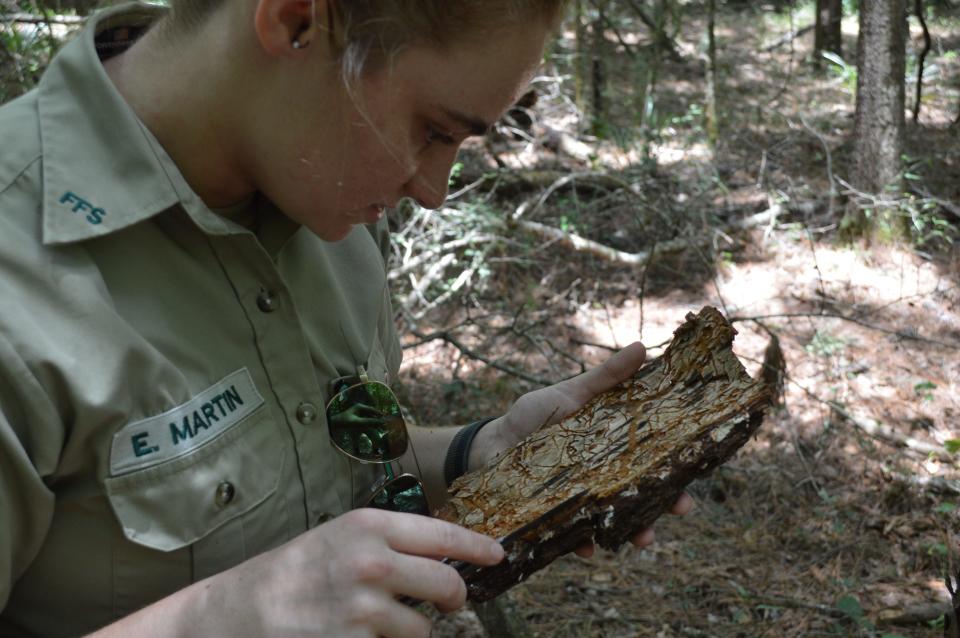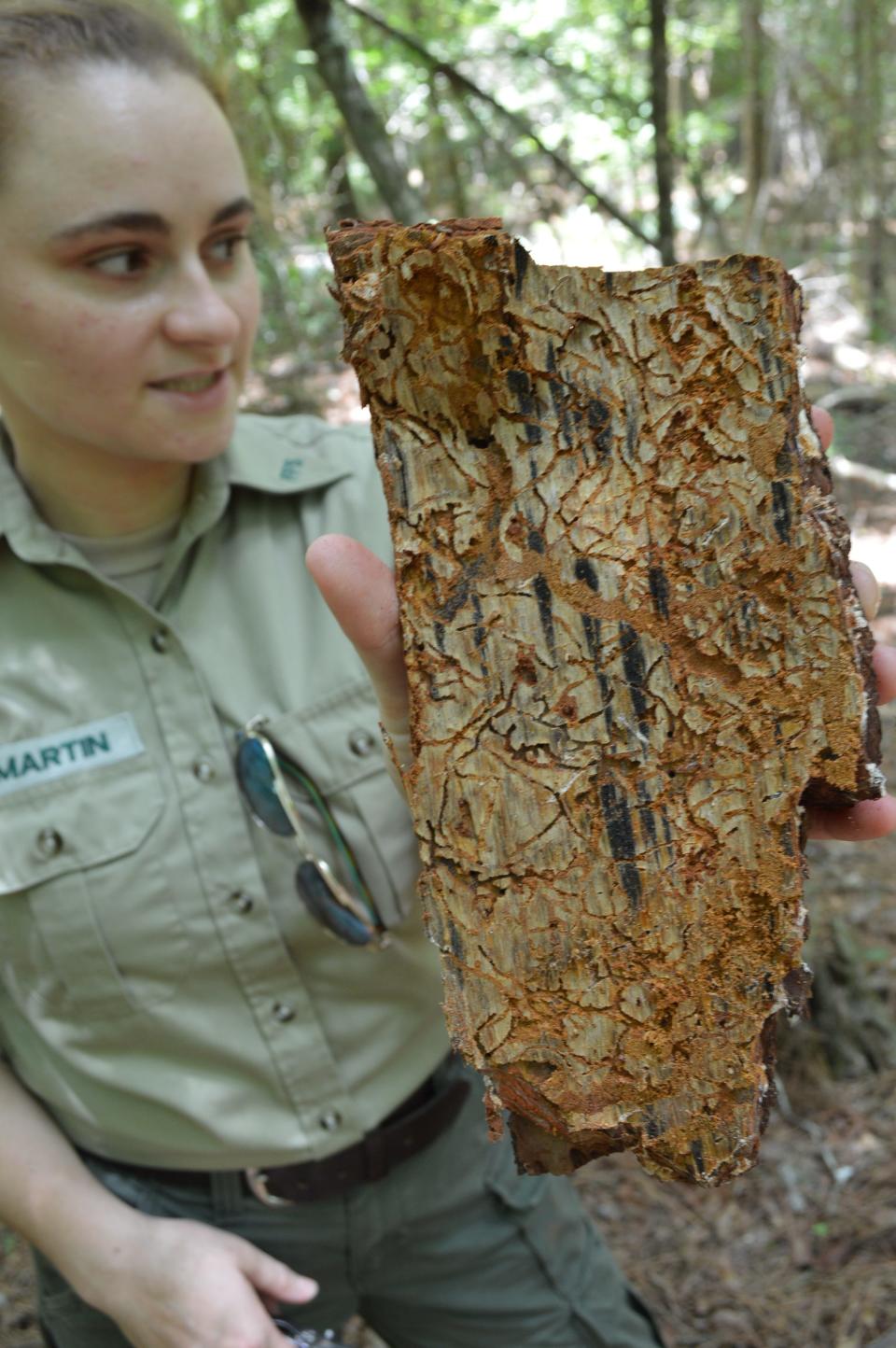A closer look at the trouble caused by destructive Southern pine beetles

The pine tree industry is a major contributor to Florida’s economy despite the loss of thousands of acres of trees due to recent hurricanes, notably Hurricane Michael in 2018.
The pine industry provides trees for timber, pulpwood, pinestraw, pine rosin (turpentine), and provides land for conservation and public enjoyment.
Beetle battle: Foresters scramble to get ahead of pine tree killers in Wakulla, Franklin
Danger lurks: Native pine bark beetles attack stressed or dying trees
Gall wasp: Eastern horned gall wasp may be culprit in laurel oak's decline
According to a recent Florida Department of Agriculture (FDACS) publication, the timber and pulpwood industry employs over 70,000 people and annually contributes greater than $6.5 Billion to Florida’s economy. One of the biggest threats to the pine industry is the Southern pine beetle.
The Southern pine beetle (Dendroctonus frontalis) is one of the most destructive insect pests of pines. In fact, the scientific name Dendroctonus means “tree killer”.
It is native to the eastern and southeastern United States, and now has been identified as far north as Maine, as far west as Arizona and as far south as Nicaragua in Central America. The beetles will infest all species of pine trees though they most commonly infest Shortleaf and Loblolly pines.
Four stages of life
The Southern pine beetle (SPB) has four life stages: egg, larva, pupa, and adult. The 2-4 mm long adult is dark red brown to black in color. Adult females live 35 to 60 days and during that time may lay as many as 160 pearly white eggs.
The initial attack is initiated by the female beetle. After finding a suitable host, the female releases pheromones which attract a mate, as well as additional females. Arriving males also release pheromones which greatly increase the number of insects drawn to the area.
The beetles bore through the outer bark to the trees vascular layer. Protected by this thick periderm layer, females create winding tunnels which they lay their eggs in after mating within the phloem layer of the tree.
As a result of the burrowing, the tree produces characteristic ‘pitch tubes’ of exuded resin. Once the nutrient rich cambium is reached, the female constructs winding egg galleries. She lays her eggs in niches cut in the gallery walls.
The male follows and tightly packs the galleries with frass, sealing in and protecting the eggs. The eggs typically hatch in less than one week but can take as long as three weeks. The hatched larvae often develop for about two weeks before they pupate but remain in a larval state for as long as nine weeks.
Finally, the pupal stage for SPB lasts for about a week. The weather, season, and other environmental factors all greatly influence the time of the development process. There may be as many as seven generations annually in Florida.

New adults seek new trees
Newly hatched larvae mine away from the gallery in the inner bark. Before they pupate, the larvae move into the outer bark. After pupating, the new adults chew exit holes and emerge.
The adults have wings and have been observed flying up to two miles in search of new trees to infest. Infested areas can range from a few trees to several thousand acres.
Development for SBP occurs throughout the whole year, including through the winter, however, the process and activity significantly decreases in cooler months. Unlike other pine beetles whose populations tend to stay consistent, SPB populations can significantly increase in years of favorable conditions.
For feeding, SPB introduces a symbiotic fungus that grows on the sugar-rich phloem tissue. The growing nutritional fungus serves as the main source of food for the larvae and is not a tree pathogen.
However, SPB is often a carrier of various blue-stain fungi which spreads throughout the vascular system of the tree and is considered a fungal pathogen. The blue stain fungus blocks the trees conductive vesicular tissue inhibiting the trees resin production response to defend itself from the infestation.
Attack from the bottom up
The female beetle initially begins her attack on the lower eight to 10 feet of the tree’s main trunk. As the attack progresses, the upper parts of the trunk will show signs of infestation.
Fresh attacks are characterized by the presence of frass and boring sawdust caught in the crevices of the bark. Pitch tubes, looking similar to white or yellowish popcorn, appear in the crevices between adjacent bark plates as the tree attempts to repel the invaders by suffocating them with resin.

As the infestation progresses, the crown of the plant begins to change from green to reddish-brown to brown. This can happen quickly and in the right conditions from start of infestation tree death can occur in just a few weeks.
When a tree is heavily infested with SPB, you can even hear the larvae feeding. If a section of the bark is removed, the characteristic winding galleries are visible.
Prevention and treatment
Trees stressed from drought, lightning strike, construction and disease emit stress-induced aromatic compounds which attract the female SPB. Taking steps to minimize tree stress and promote good health are the first steps to reduce risk of infestation.
Routine inspections noting the overall health of the tree, proper watering, fertilization, and maintenance are important. Preventing damage to the root system of the plant is vital.
The root systems of pines are shallow and extremely sensitive to damage and must be protected during construction activity. Heavy equipment compacts the soil and damages the root system. Root raking, trenching and/or cutting of major roots should be avoided.
Preventative chemical treatments are available with a limited efficacy timeframe from three months to two years. It is not economical or environmentally conscious to do so on a large-scale tree farm.
The application of protective sprays as a preventative is expensive but may be considered for preserving valuable specimen trees in the urban landscape. Contact a certified arborist and/or accredited pest management company to learn more about application options.
To read more stories about living in Panhandle Florida visit Outdoorauthor.com.
The writers are Ed Duke, PhD (Associate Professor in the FAMU College of Agriculture and Food Sciences), Sam Hand, FAMU Extension (Associate Professor and Director of Industry Credentialing Training Programs, FAMU Cooperative Extension), Chris D. Renn, Arborist Representative, Bartlett Tree Experts, Tallahassee, and Les Harrison (UF IFAS Extension Agent Emeritus).
Never miss a story: Subscribe to the Tallahassee Democrat using the link at the top of the page.
This article originally appeared on Tallahassee Democrat: Southern pine beetle bores into North Florida forests

